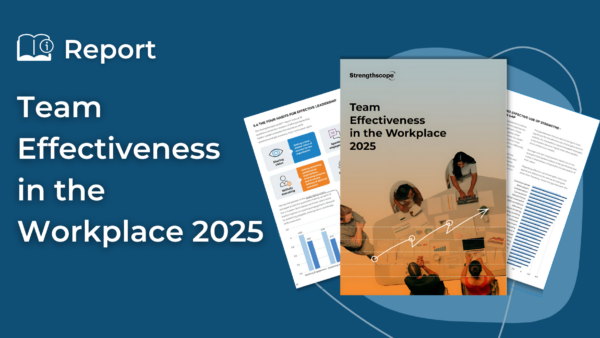There has been a lot of focus on leaders as charismatics, visionaries and strategists, however, this ‘great man’ approach to leadership is very dated and there is little evidence of a link between these qualities and effective leadership outcomes.
In today’s hyper-competitive, complex and fast-changing environment, leaders can’t be super-heroes or all-rounders. Rather, they need to play to their unique strengths and be workplace energisers, unlocking the energy and ideas of others to deliver unique and sustainable value to their customers/stakeholders.
Based on decades of experience with leaders and research into helping leaders build more energised and productive workplaces, I have outlined below 6 steps leaders can take to become a workplace energiser:
1. Unlock the energy and passion of your people
Great leaders know how to identify and unlock the natural strengths of their people. At companies like Channel 4, PhotoBox, Camelot, BOC and Facebook, leaders consciously identify and stretch people in areas of natural strength. They regard themselves as strengths coaches and encourage employees to discover and optimise their strengths by doing more of the work they love to do. This doesn’t mean ignoring areas that are less energising or weaker areas as naysayers of the strengths approach incorrectly assume; it means approaching these performance risks in empowering and creative ways to ensure performance is maximized. Leaders who view themselves are workplace energisers don’t expect employees to be well-rounded. Rather, they challenge them to excel in areas of strength and encourage people to call on co-workers for help in areas where they are weaker, giving rise to strong teams and support networks.
2. Align people’s energy with the purpose of the organisation
Companies with a clearly stated and operationalized purpose will find it easier to recruit and retain people who believe in the purpose and are committed to working hard to achieve it. The purpose should describe the company’s reason for being, the value the business will deliver to customers and how it will conduct itself. A purpose is not a financial or numerical goal, it is a combination of the company’s vision, mission, and values.
By clarifying and regularly reinforcing a straightforward purpose and how this helps create value for customers/stakeholders, leaders are more likely to engage the energy and passion of their people.
3. Focus the energy spotlight on your people, not yourself
As Liz Wiseman pointed out in her bestselling book Multipliers: How the best leaders make everyone smarter, great leaders focus not on showing how smart and brilliant they are at the expense of giving their people an opportunity to shine and grow. Rather, they are “genius makers” who put the spotlight on their people and invest in coaching, delegating, supporting and inspiring them to be the best they can possible be so that they can enjoy the glory of their success. They take time to recognise both hard work and achievements, personalizing this whenever possible to celebrate and encourage excellence. They are also generous in giving credit to others while taking the heat when things go wrong.
4. Remove energy blockers and sappers
A crucial role of any leader is to identify and remove bottlenecks and blockers to effective performance and positive energy. Some of these are human performance factors arising from weaker areas, overdone strengths (when strengths are used in the wrong way or at the wrong time and result in negative outcomes) and psychological barriers like poor self-confidence. By offering support, coaching and encouragement, leaders can help people reduce these sources of interference to enable them to achieve more than they ever thought was possible.
The second group of blockers are environmental and include things like poor working conditions, lack of tools or resources to do the job to a high level or regulatory changes impacting the organisation. Leaders need to work with HR and their teams to expose and find solutions to these blockers and put plans in place to minimize them whenever possible.
5. Use the power of social networks to amplify energy
Effective leaders embrace the power of online and offline social networks to diffuse and amplify energy and ideas through encouraging online and physical networking and sharing of learning, facilitating collaborations across business areas and ensuring open and honest two-way dialogue with customers, suppliers and others stakeholders. In this way, energy and passion around ideas, solutions and possibilities are amplified and any concerns and issues are dealt with in a swift, transparent and constructive way.
6. Regulate energy
Too many leaders today are pushing their people to breaking point. This is exacerbated by organisational cost-cutting and a “do more with less” mindset which are increasingly commonplace throughout the economy. Stress-related physical and psychological illnesses, including ‘burnout’, are on the rise and the cost to both organisations and society are growing significantly.
Effective leaders understand the need to regulate energy and provide people will opportunities to rest, recover and reflect. They encourage people to take time off during holidays and to disconnect insofar as possible during these periods. They organise work to ensure people are not working at full pace continuously and prioritise opportunities to reflect, plan and review work using social forums such as team offsites, 1-1 coaching conversations and ‘lunch and learns’.
Just like a winning Olympic sports team, high performing workplaces are dependent on the optimisation of people’s energy, skills and ideas. In order for leaders to be performance makers, they need to become workplace energisers. This involves identifying and developing people’s strengths and skills, ensuring alignment with the company’s purpose, maximising energy through effective removal of energy sappers and continuously regulating energy to maintain wellbeing and focus. In an increasingly competitive and fast-changing environment, energising leadership is crucial to the sustained growth and success of any organisation.
If you want to learn more about how to become a workplace energiser, read our new book: Optimize Your Strengths: Use Your Leadership Strengths to Get the Best Out of You and Your Team, 2016, James Brook & Dr Paul Brewerton, London: Wiley.
James Brook










